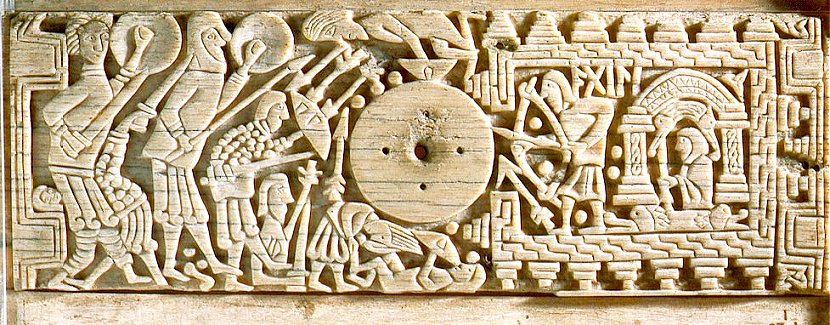|
||||||
|
The automatic translation is necessarily imprecise. This translation does not replace the reading of German or English original texts.
Of Valhalla and the Final Battle
With the help of pictures and inscriptions on four panels the rune master has provided a perfect life from birth to death for his (as we may assume) royal protegee. His death in battle qualifies him for Valhall, where he takes his seat among Woden's warriors.1There he is preparing himself for the final battle
1 In Norse religion the einherjar or einheriar were spirits of warriors who had died bravely in battle. The name is Old Norse for "one-army-ers". It is often interpreted as "outstanding fighter", but might also signify "those who are all [now] in one army", because when alive on earth they were in many armies and bands, but now they are all in the Army of the Dead.
After they die, the valkyries escort half of the slain from the battlefield to Valhalla (these are the "einherjar"), which is part of Asgard (commonly described as the "Norse Heaven"); the other half went to Fólkvangr (Freyja's hall). The Grímnismál describes Valhalla as having five hundred and forty doors, and through each of them, eight hundred could march abreast (a hundred, hundrað, in Old Norse could mean either 100 or 120), indicating the size of the hall and the numbers of the einherjar. 2 A number of older articles [Worsaae (um 1900), J. Sephton (1896), E. Schultz (1941)] interpret this picture in the same way, inspired by the three valknutr. See Alfred Becker: Franks Casket (Regensburg, 1973), p.86. |
||||||
|
||||||
|





